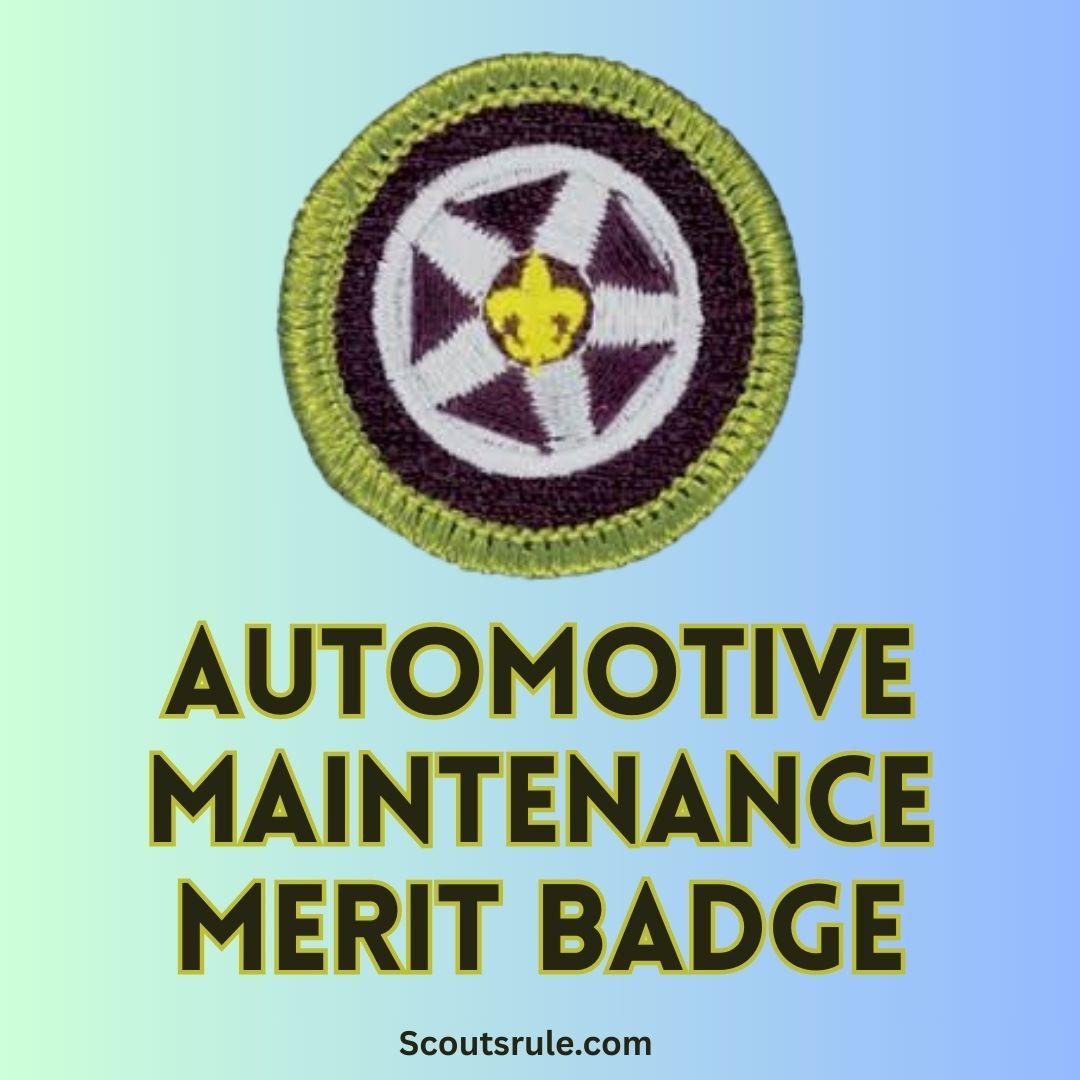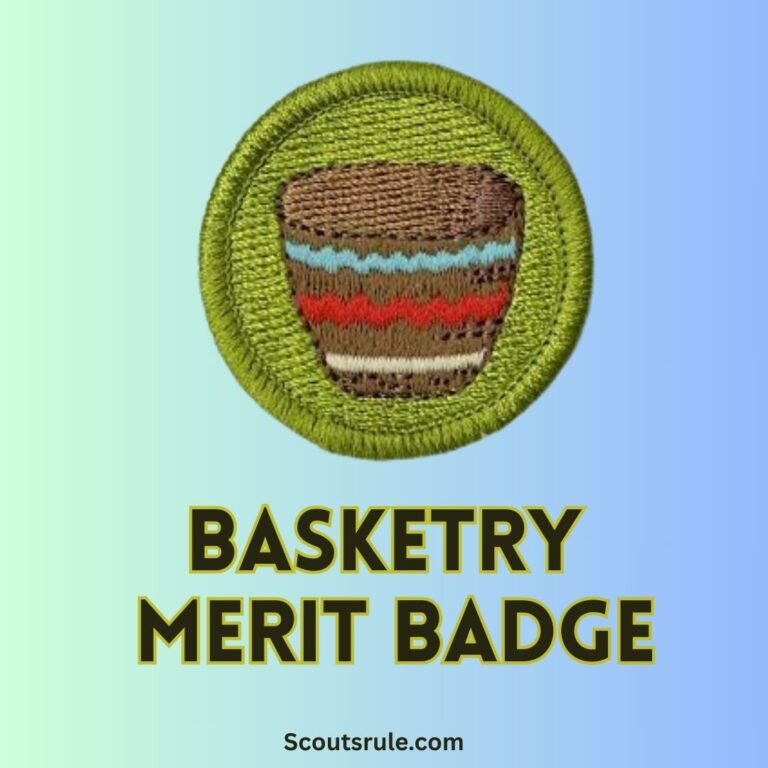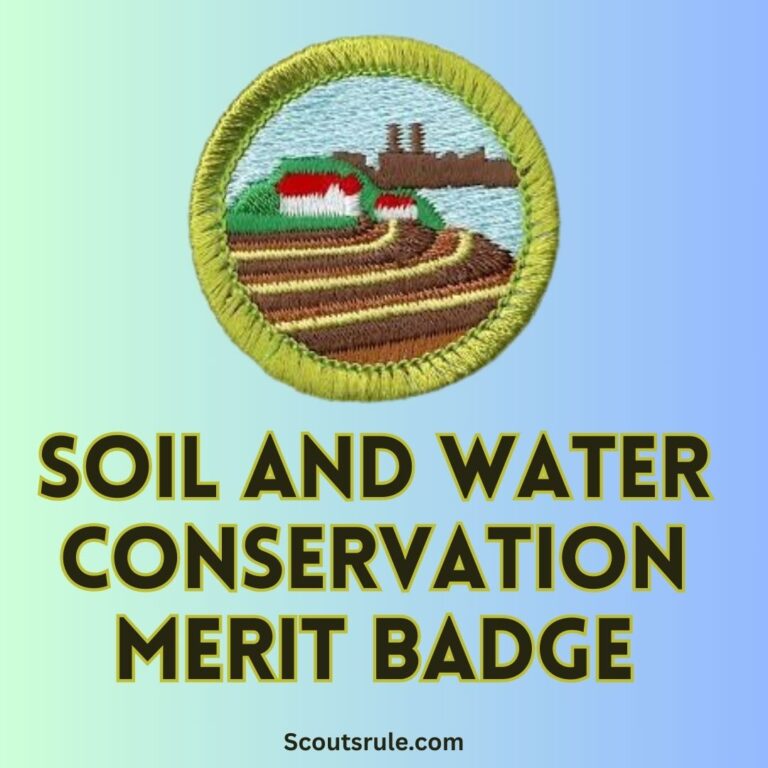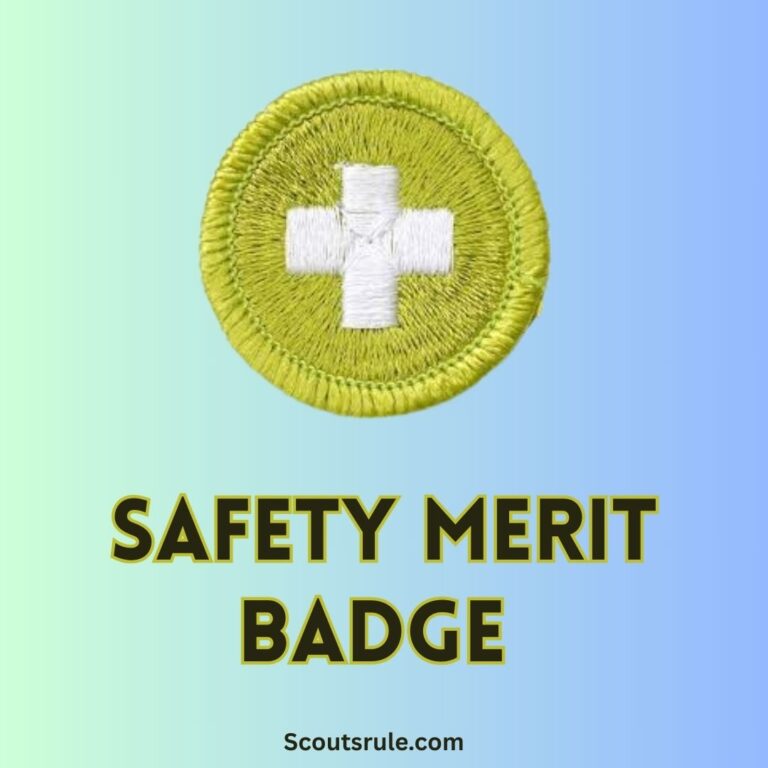
This guide is designed to help you explore and understand the fundamentals of maintaining a motor vehicle. It will provide you with an overview of important safety procedures, vehicle systems, routine maintenance tasks, and troubleshooting techniques. Remember that this guide is intended to supplement the official Boy Scouts of America (BSA) merit badge pamphlet; always refer to the current official requirements and work closely with your merit badge counselor to ensure your work meets local council standards.
Post Contents
- Introduction: The Importance of Automotive Maintenance
- 2. Purpose and Objectives of the Automotive Maintenance Merit Badge
- 3. Safety and Registration
- 4. General Maintenance Practices
- 5. Dashboard and Instrument Panel Overview
- 6. Vehicle Subsystems: Tires, Engine, Brakes, and More
- 7. Hands‑On Projects and Demonstrations
- 8. Documentation, Record Keeping, and Presentation Strategies
- 9. Additional Tips, Resources, and Career Connections
- Conclusion: Gaining Confidence in Vehicle Maintenance
Introduction: The Importance of Automotive Maintenance
Automobiles are complex machines that require regular upkeep to run safely and efficiently. Whether you are a future vehicle owner or just have a general interest in how cars work, learning automotive maintenance is key to developing self‑reliance, saving money on repairs, and ensuring overall safety on the road. The Automotive Maintenance Merit Badge is designed to provide you with hands‑on experience and technical knowledge about a vehicle’s components, routine service, and repair activities. By exploring these principles, you gain insight into everyday car care—and develop practical skills for troubleshooting and maintaining any motor vehicle.
2. Purpose and Objectives of the Automotive Maintenance Merit Badge
The objectives of this merit badge include:
- Educational Growth: Develop a comprehensive understanding of the mechanical and technological aspects of vehicles. Learn the scheduled maintenance tasks as outlined in an owner’s manual.
- Technical Skill Development: Gain hands‑on experience in routinely checking fluid levels, inspecting belts, hoses, fuses, and understanding the basics of engine, transmission, and brake system functions.
- Safety and Responsibility: Recognize the hazards associated with automotive maintenance—from the risk of burns or cuts to hazards in operating tools—and learn best practices to mitigate these risks.
- Practical Experience through Projects: Complete specific projects such as inspecting fluid levels, checking tire condition, and replacing a fuse. These projects not only build your skills but also prepare you to help maintain a vehicle safely.
- Career and Future Readiness: Understand how automotive maintenance can introduce you to careers in the automotive industry. Being knowledgeable about car care is a transferable skill that enhances personal responsibility and potential job prospects.
Through these objectives, you become a more effective and confident individual who can safely ensure a vehicle’s longevity and performance.
3. Safety and Registration
Safety is paramount in automotive maintenance. This section addresses how to identify potential hazards and ensure regular vehicle maintenance according to your vehicle’s owner’s manual.
3.1 Identifying and Reducing Hazards
- Common Hazards:
- Tools & Equipment: Risks from sharp tools, hammers, and wrenches.
- Fluids and Chemicals: Contact with engine oil, coolant, and battery acid can be hazardous if spilled.
- Moving Parts: Awareness of belts, fans, and moving components that could cause injury.
- Prevention & Mitigation:
- Wear appropriate personal protective equipment (PPE) such as gloves and safety glasses.
- Keep your work area well‑lit and clutter‑free.
- Follow instructions closely and ask for guidance if you are uncertain.
3.2 Personal Protective Equipment and Safety Tools
- Essential PPE:
- Safety glasses or goggles
- Gloves (for handling hot or greasy parts, and when working under the hood)
- Protective clothing, such as long sleeves and closed-toe shoes
- Tool Safety:
- Always use a tool for its intended purpose.
- Inspect tools for damage before use.
- Vehicle Safety:
- Ensure the vehicle is properly supported by jack stands if working underneath.
- Engage the parking brake and use wheel chocks when appropriate.
3.3 Vehicle Registration and Owner’s Manual Familiarity
- Registration: Understand that an up‑to‑date vehicle registration is part of responsible ownership.
- Owner’s Manual: Study the maintenance chart provided in the manual. It details:
- Recommended maintenance intervals
- Fluid replacement schedules
- Safety instructions for various systems
As part of your project, review your own (or a family member’s) vehicle manual to familiarize yourself with routine maintenance tasks.
4. General Maintenance Practices
Routine maintenance ensures vehicle longevity and road safety. This section covers key maintenance tasks you should be able to perform or understand.
4.1 Understanding the Maintenance Schedule
- Importance of a Maintenance Chart: The owner’s manual contains a maintenance chart indicating which items to check or change after certain time intervals or mileage.
- Tasks Include:
- Checking the levels of engine oil, coolant, brake fluid, power steering fluid, windshield washer fluid, and transmission fluid.
- Inspecting the condition and tension of belts and hoses.
4.2 Routine Checks and Inspections
- Fluid Checks: Learn to open the hood, locate reservoirs, and use dipsticks to check fluid levels.
- Engine Oil: Look for appropriate viscosity and check for contaminants.
- Coolant: Verify that the mixture is correct and free of debris.
- Brake Fluid & Power Steering Fluid: Note levels and clarity.
- Fusible Elements: Locate and inspect fuse boxes. Understand different types and sizes of fuses.
- Belts and Hoses: Check for cracks, fraying, and tension issues. Note that worn belts can lead to overheating and other malfunctions.
4.3 Using Tools and Equipment
- Essential Tools: Familiarize yourself with wrenches, screwdrivers, flashlights, and a multimeter if available. These tools often appear in routine maintenance.
- Organization: Keep a clean and dedicated space for automotive work. Document tool usage and maintenance to preserve their functionality.
Understanding these strategies provides you with the knowledge needed to help maintain vehicles responsibly and safely.
5. Dashboard and Instrument Panel Overview
Modern vehicles are equipped with a dashboard containing various warning lights, gauges, and indicators. This section helps you understand how to interpret this vital information.
5.1 Understanding Dashboard Indicator Lights
- Common Indicators:
- Check Engine Light
- Oil Pressure Warning
- Battery and Charging System Warning
- ABS or Stability Control
- Tire Pressure Monitoring System (TPMS)
- Interpreting Signals: Explain how each warning light may indicate specific issues that require further inspection. For example, the check engine light might signal an issue with emissions or engine performance.
- Gauges and Odometers: Understand how to read the speedometer, tachometer, fuel gauge, and odometer. These instruments help monitor the vehicle’s condition.
- User Interaction Tips: Practice identifying these indicators and troubleshooting common warnings by consulting your vehicle’s manual.
6. Vehicle Subsystems: Tires, Engine, Brakes, and More
A vehicle consists of many interconnected systems. Being able to perform basic checks on each is a key element of automotive maintenance.
6.1 Tire Maintenance
- Importance of Tires: Tires are critical for safety and performance. They provide traction and affect handling.
- Routine Checks: Check tire pressure using a gauge, inspect for wear patterns, and examine tread depth. Rotate tires regularly for even wear.
6.2 Engine and Fluids
- Engine Oil: Monitor oil levels and quality. Change oil according to the manufacturer’s schedule.
- Coolant: Check the coolant level and quality. Flush and replace coolant as recommended.
- Additional Fluids: Regularly check brake fluid, transmission fluid, and power steering fluid.
6.3 Brake System
- Brake Inspection: Describe how to check brake pads, discs, and fluid levels. Ensure that the system is functioning properly.
- Safety Importance: Proper brake maintenance is vital for safe vehicle operation.
6.4 Fuel and Ignition Systems
- Fuel System: Understand the components (fuel pump, fuel filter, injectors) and the importance of clean fuel.
- Ignition and Electrical Systems: Check the battery’s condition and terminals, inspect fuses, and understand basic electrical terminology.
7. Hands‑On Projects and Demonstrations
Practical projects help solidify your understanding by providing real-life experience.
7.1 Project: Fluid Level Check and Replacement
- Objective: With the help of a parent or mentor, demonstrate how to check and, if needed, top off vital fluids in a vehicle.
- Steps:
- Review the owner’s manual for proper procedures.
- Use appropriate tools (dipsticks, funnels, etc.) to check fluid levels.
- Record your findings in a maintenance log.
- Documentation: Include photographs or written notes detailing the process and results.
7.2 Project: Fuse Box and Belt Inspection
- Objective: Locate the fuse box, identify fuse types, and inspect the condition and tension of belts and hoses.
- Steps:
- Demonstrate proper fuse replacement on a test bench if available.
- Use a visual inspection to document wear and tear on belts.
- Prepare a short report summarizing your observations.
- Documentation: Provide photos, sketches, and a written explanation of how these components affect overall vehicle performance.
7.3 Dashboard Functionality Demonstration
- Objective: Explain the meaning of common dashboard warning lights and turn on/off features.
- Steps:
- Demonstrate how to navigate the dashboard display.
- Explain common alerts (using the vehicle manual as a reference).
- Outline troubleshooting steps for the check engine light or other indicators.
- Documentation: Create a labeled diagram or chart correlating dashboard symbols with their meanings, and explain the steps to follow when a warning is activated.
8. Documentation, Record Keeping, and Presentation Strategies
Keeping a detailed record of your work is crucial to demonstrating competency and progress.
8.1 Maintaining a Vehicle Maintenance Journal
- What to Include: Log every maintenance inspection, work session, and project. Include dates, observations, and any problems encountered.
- Visual Documentation: Supplement your notes with photographs of your work (e.g., fluid check processes, fuse box visits, tire inspections).
- Reflective Entries: Write about what you learned from each experience and any advice received from mentors.
8.2 Creating a Final Portfolio
- Organization: Combine your journals, photographs, diagrams, and final project reports into a neatly organized binder or digital folder.
- Table of Contents: Create a clear table of contents that guides your merit badge counselor through your documentation.
- Practice Presentations: Prepare to present your findings to your counselor. Focus on clear, concise explanations and visual aids to support your verbal presentation.
9. Additional Tips, Resources, and Career Connections
Additional Tips
- Plan Ahead: Review your vehicle’s owner’s manual early in your project. Create a schedule for doing routine checks.
- Seek Guidance: Don’t hesitate to ask for help from parents, mentors, or local mechanics if you’re unsure about a procedure.
- Use Technology: Digital tools like smartphone apps for fluid level reminders or maintenance logs can streamline your documentation process.
- Keep Learning: Continue to expand your knowledge by reading automotive repair manuals, watching instructional videos, or participating in local automotive clubs.
Resources
- Official BSA Materials: Always refer to the official Automotive Maintenance Merit Badge pamphlet for current requirements.
- Books and Magazines: Look for automotive repair guides and magazines available at your local library or online.
- Websites: Reputable sources such as automobile service websites (e.g., Edmunds, Car Talk) and manufacturer maintenance guides can offer additional insights.
- Local Workshops: Some auto repair shops or community colleges offer introductory classes on vehicle maintenance.
- Online Forums: Participate in online automotive forums or social media groups for additional tips and troubleshooting advice.
Career Connections
Understanding vehicle maintenance can open career paths in fields such as:
- Automotive Technology and Repair: Becoming a certified automotive technician or mechanic.
- Automotive Engineering: Working in the research and development of vehicle systems.
- Service Management: Overseeing the maintenance and repair operations in automotive dealerships or service centers.
- Technical Sales: Providing expertise for companies that produce automotive parts and maintenance tools.
Research these opportunities by interviewing local mechanics or automotive professionals, and consider how your skills might lead to future educational or vocational pursuits.
Conclusion: Gaining Confidence in Vehicle Maintenance
Earning the Automotive Maintenance Merit Badge is an extensive and hands‑on journey into understanding how vehicles function and how to keep them running safely and efficiently. Through regular inspections, fluid checks, fuse and belt monitoring, and the interpretation of dashboard indicators, you learn essential maintenance techniques that contribute to both vehicle longevity and personal safety. Beyond acquiring technical knowledge, you gain lifelong skills in critical thinking, problem-solving, and responsible vehicle ownership.
As you compile your documentation—from your detailed journals and photographs to your final portfolio—you not only meet the requirements of the merit badge but also create a solid foundation for further education or a potential career in the automotive field. May your experiences instill in you confidence, empower your ability to tackle unexpected vehicle issues, and foster a continuous desire to learn more about automotive technology.
Happy maintaining, and may your passion for vehicles steer you toward a bright and knowledgeable future in automotive care!

Hi, Robin here, A former lead Scout and here I share my inspiring stories about USA Scouts, leadership, adventure, how to guides and more.






